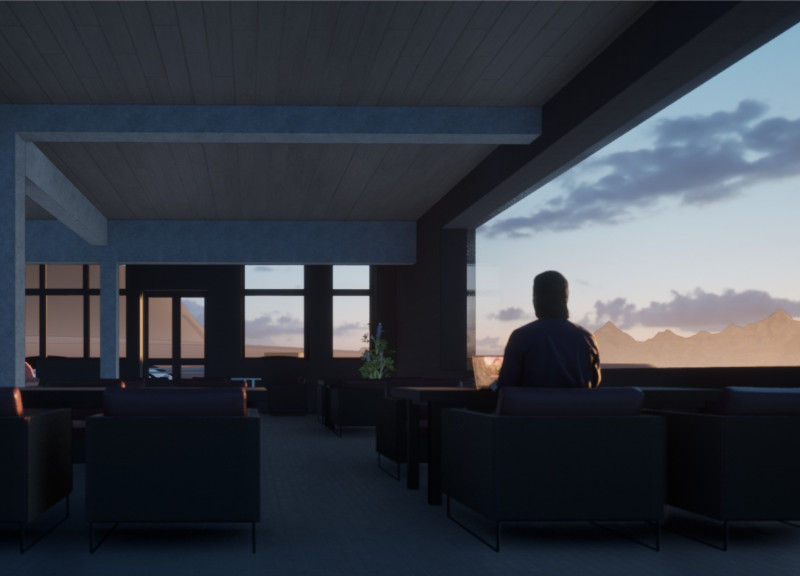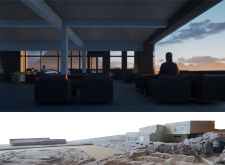5 key facts about this project
The Mývatn Food Factory is located in the scenic landscapes of Iceland and is designed to merge food production processes with respect for the environment. It functions as both a workspace for food preparation and an engaging venue for visitors. The design emphasizes transparency and connection, allowing guests to witness how their food goes from the farm to their plates.
Architectural Integration
A central feature of the design is a crane that connects two greenhouses and serves both functional and visual purposes. This element highlights the technological aspects of food production while becoming a standout part of the interior. The crane not only facilitates operations but also adds an interesting visual detail to the space.
Spatial Organization
The layout is characterized by open spaces that avoid traditional walls and barriers. This arrangement encourages movement and interaction among different areas, improving user experience. Visitors can see the production process in real-time, strengthening their connection to the food served in the restaurant and letting them observe the journey from growth to preparation.
Operational Efficiency
The organization of facilities within the factory is planned to ensure smooth operations and comfort for employees. Important spaces include areas for processing meat and fish, cold food preparation, and storage for daily products. Staff amenities, such as locker rooms and kitchens, are carefully integrated, promoting efficiency while maintaining connectivity throughout the building.
Environmental Context
The design responds to the landscape it inhabits, ensuring a harmonious fit with the surrounding environment. The building shape complements the natural topography and climatic conditions of Iceland. Strategies for energy management and sun-oriented volumes allow for natural light and lower energy use, reflecting a commitment to sustainability in design.
Large windows provide clear views of the greenhouses, allowing daylight to enter the interior spaces and creating a direct link between guests and the food production process. This openness helps foster an appreciation for the journey their meals undertake, enhancing the overall dining experience.





















































